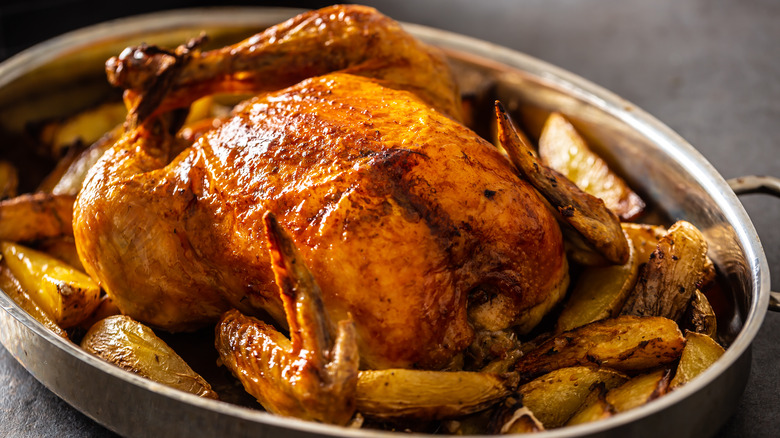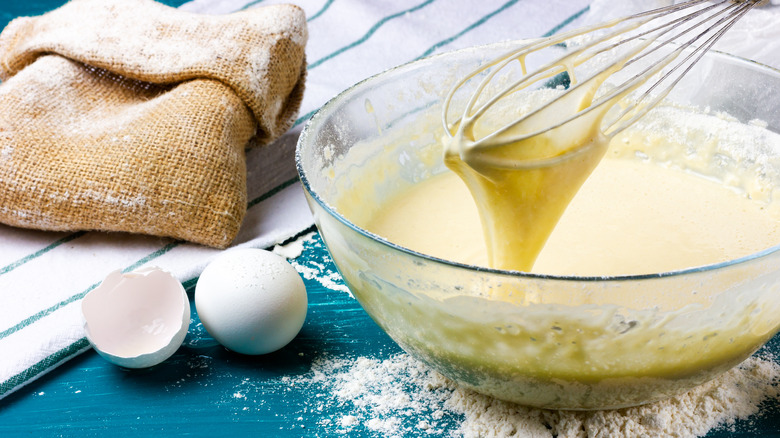What Makes Roasting And Baking Different?
When you consider the word "baking," you probably associate it with muffins, cookies, cakes, and bread. A pot roast or beef tenderloin might come to mind when you think of the term roasting. They must be two very different cooking techniques to have such drastically different outcomes, right? But wait a minute ... what about that recipe you love for baked chicken drumsticks? And that classic roast chicken you make every winter?
If you use bake and roast interchangeably, you're not alone. Do a random Google search for a particular recipe and odds are that a fair number of the results will call for you to bake, while the others direct you to roast. Before you start declaring you like to roast your fudge brownies and bake your pork belly though, there are some differences between the two methods that are worth being aware of. Let's explore these pseudo-synonyms and clear up when to opt for one over the other.
It's about form and temperature
Roasting has been around since the caveman days and the first campfire cookouts. Historically, meat or poultry was placed on a stick or spit, and cooked over an open flame. In this sense, it is a dry heat method of cooking — as opposed to moist heat which uses steam or liquid to transfer heat to the food, per Rouxbe. These days, most roasting is done in the oven in an uncovered pan or on a rack, though rotisserie and barbecues still fall under the roasting umbrella (via Encyclopedia).
Also taking place in a pan in the oven, baking's roots go back pretty far as well — according to Anybody Can Bake, baking can be traced to the first oven discovered in Croatia (from around 6,500 years ago) and Egyptians being the first to introduce yeast to bread. A dry heat method is also used to heat the oven air and cook the food.
One difference between the two cooking methods is temperature. Roasting is typically done to meats and vegetables at upwards of 350 degrees Fahrenheit (and often much higher), whereas baking often falls at (or lower than) that benchmark, says Thermo Blog. There are exceptions to this — think a large prime rib or turkey you want to keep low and slow. Baking typically refers to baked goods, but savory dishes with combined, often saucy, ingredients — such as lasagna or a casserole — are also usually baked.
Another distinction is shape and structure. Baked foods usually enter the oven in a liquid or dough form and emerge as a solid. Roasted dishes go in looking pretty close to how they come out.

